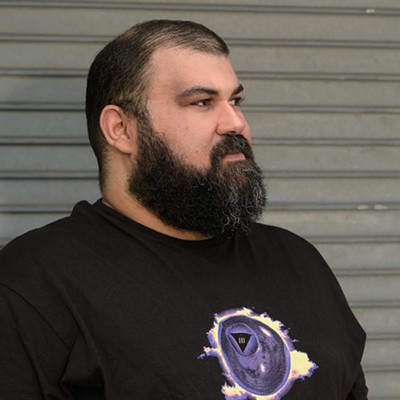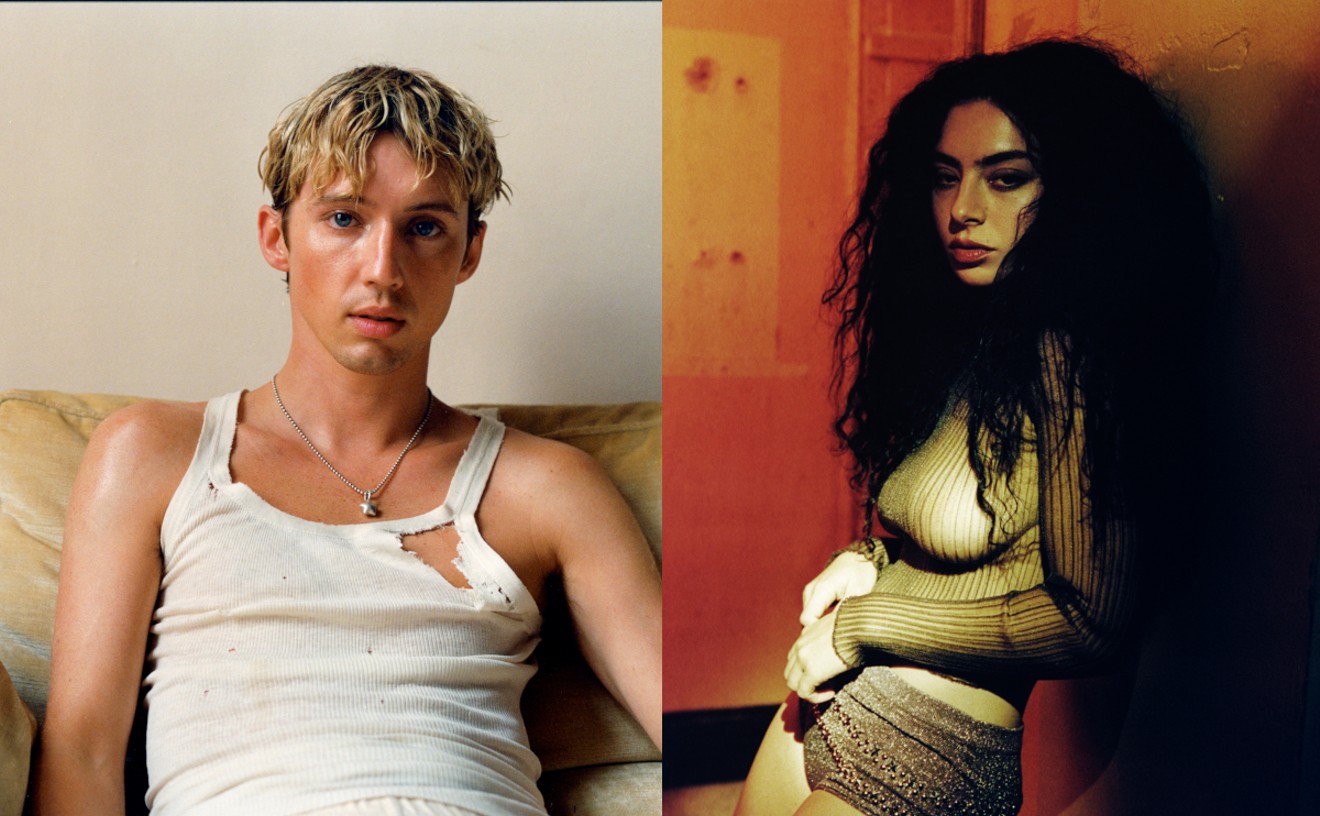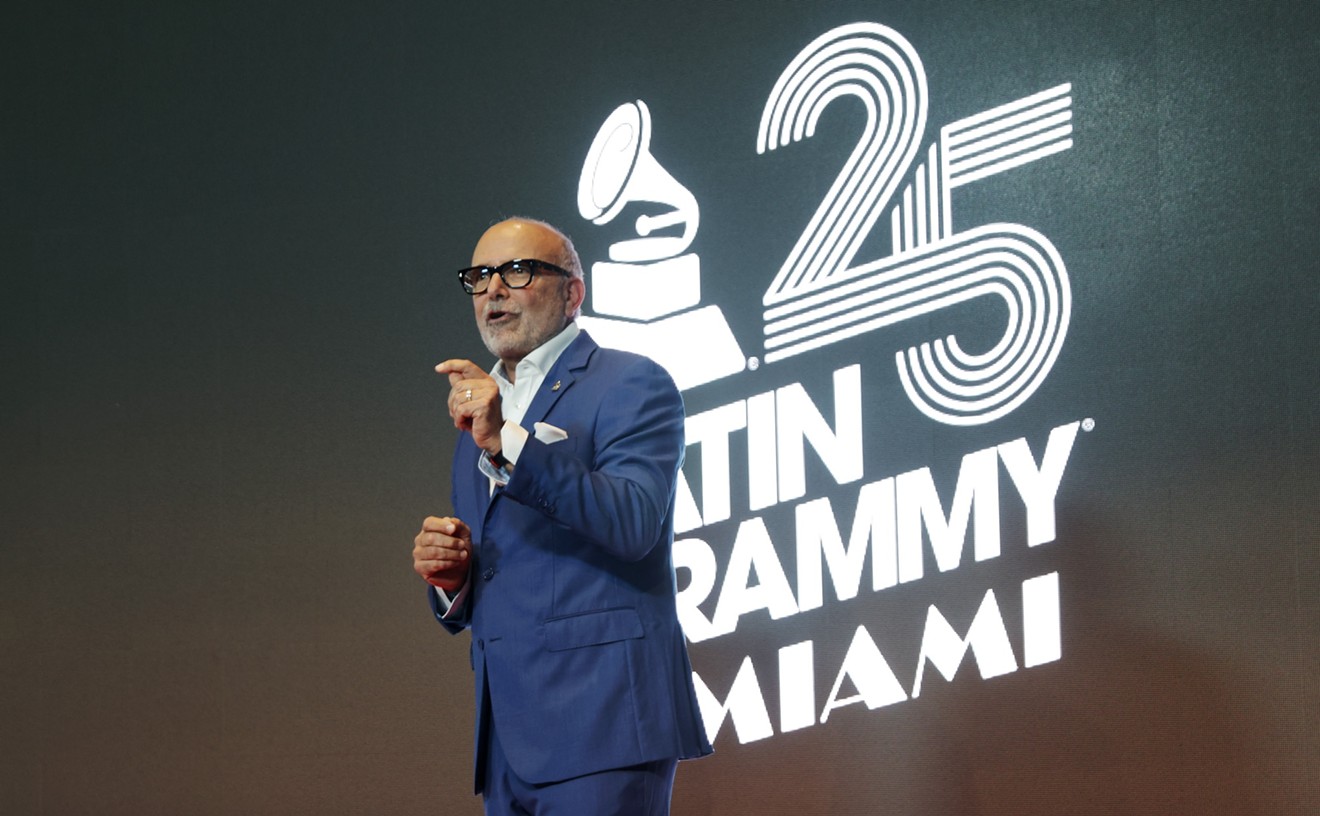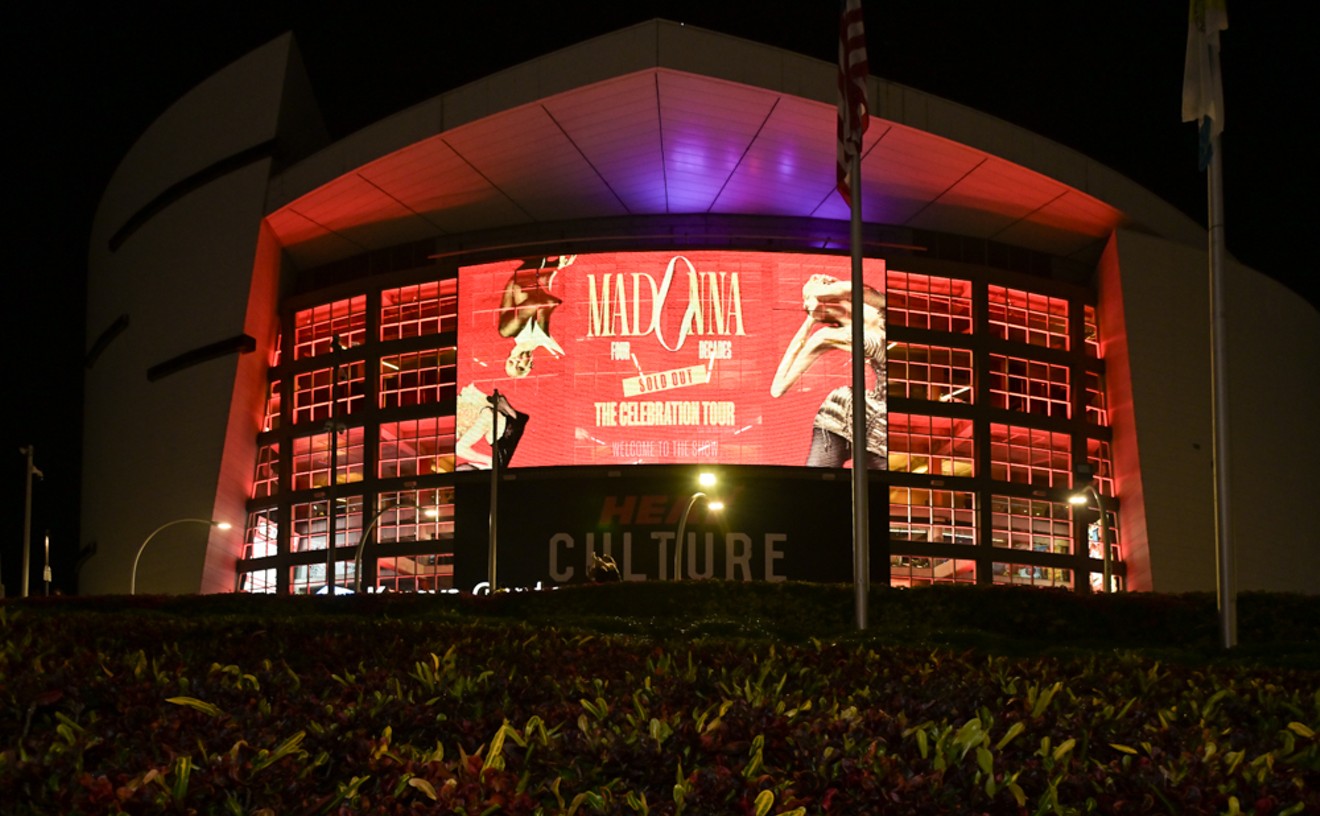The big news from day one at Ultra Music Festival 2015 was, of course, the rain. Personally, we spent more time in the press area trying not to get wet than we did on the festival grounds. (Still, Röyksopp's last-minute performance on the Live Stage made all the crappy weather worth it.)
But what shouldn't be overlooked is how seriously Ultra is taking its security detail and policy this year. From banning common dance music festival items like masks and glow sticks to beefing up police presence, the UMF experience feels more organized than ever before. Any concern the festival would turn into some sort of police state was unfounded. For the most part, officers were reserved and courteous, not necessarily looking to arrest anyone, just making sure that everyone was having fun safely.
In a statement emailed to New Times, Ultra reps explained the festival's new strategy, writing: "The festival continues to work directly with the Miami Police Department, the DEA, and Homeland Security deploying over 300 police officers per day, including undercover officers, over 400 private security guards, and implements various high-level security measures throughout the festival."
The most noticeable changes to Ultra's security setup could be seen during the walk to Bayfront Park. The perimeter was no longer surrounded by easy-to-breach chainlink. Instead, Ultra reused the 12-foot barriers brought downtown for the Miami ePrix earlier this month. The fence is tough, with a concrete base and topped with a slightly curved anti-climb railing. For extra measure, plywood covers the upper portions of the barriers, making them virtually impossible to scale.
Some areas along the perimeter are also restricted to Ultra ticket holders. So anyone thinking of rushing the fence would first have to figure out how to get close to it. The festival has designed a network of railings and fences at intersections and along the sidewalks of Biscayne Boulevard, which control the flow of pedestrians on the streets outside the festival. There are police officers everywhere, directing traffic, both automative and human. At certain places, especially approaching the festival's main gate, there are even checkpoints where a person can't proceed without an Ultra pass or press credentials.
The security detail stationed around the perimeter was exclusively local law enforcement, who are much more intimidating than your average CSC security worker. (Contemporary Services Corporation is the company that employed security guard Erica Mack, who was the victim of last year's near-fatal trampling at Ultra when a mob rushed a weak point in the fence at Biscayne and SE First Street.) In fact, CSC workers were relegated to working inside the festival, protecting areas like VIP entrances and photo pits. Law enforcement was also posted throughout the park keeping watch. (The Miami Police Department did confirm to the Miami Herald that several arrests were made Friday night, but exact numbers and the reasons for those arrests were not given.) Another big change: The placement of the festival's main gate, which is now located at the same intersection as the entrance to Bayside Marketplace at Biscayne and NE Fourth Street. The entrance is wide, and though we didn't actually enter there (because press and artists are required to gain admittance to Ultra from a rear entry point), it seemed like the check-in process was moving pretty smoothly. (Although we do have questions about how contraband items are being handled. Is there a garbage bag full of pacifiers laying around somewhere in downtown Miami?)
Yes, we did spot some contraband, like masks. But honestly, we find the still-popular trend of Native American headdresses at Ultra way more offensive. And surprisingly, we didn't spot a single glow stick or pacifier as we roamed around the festival.
The new age policy was also an improvement. Ultra being an 18-and-over festival makes sense. Sorry, kids, but a 60,000-person-a-day dance music event is no place for minors. And though UMF claims underage attendees were a minority at past festivals, we couldn't help but feel this Ultra seemed more "adult." Clear backpacks, mesh drawstring bags, and fannypacks were also widely being used by everyone — artists and media were the only groups allowed to break this rule, but media still had to undergo a bag check before entering the festival. (We had to explain why we were carrying a bottle of ibuprofen. It's because we're old and our bodies are achy.)
In the end, it seems as though Ultra's smartest move was hiring former Miami Beach Police Chief Ray Martinez as head of security. He brought reasonable and overdue change to the festival. Gone are some of the more chaotic aspects, and while we did see some attendees being helped by paramedics, we can't say it felt out of control.
Unfortunately, some people just don't know their limits.
[
{
"name": "Air - MediumRectangle - Inline Content - Mobile Display Size",
"component": "19274298",
"insertPoint": "2",
"requiredCountToDisplay": "2"
},{
"name": "Editor Picks",
"component": "17482312",
"insertPoint": "4",
"requiredCountToDisplay": "1"
},{
"name": "Inline Links",
"component": "18711090",
"insertPoint": "8th",
"startingPoint": 8,
"requiredCountToDisplay": "7",
"maxInsertions": 25
},{
"name": "Air - MediumRectangle - Combo - Inline Content",
"component": "17482310",
"insertPoint": "8th",
"startingPoint": 8,
"requiredCountToDisplay": "7",
"maxInsertions": 25
},{
"name": "Inline Links",
"component": "18711090",
"insertPoint": "8th",
"startingPoint": 12,
"requiredCountToDisplay": "11",
"maxInsertions": 25
},{
"name": "Air - Leaderboard Tower - Combo - Inline Content",
"component": "17482313",
"insertPoint": "8th",
"startingPoint": 12,
"requiredCountToDisplay": "11",
"maxInsertions": 25
}
]











